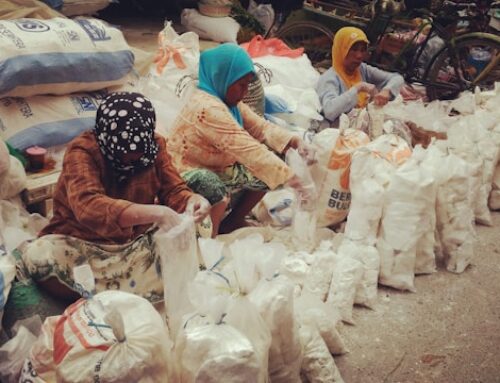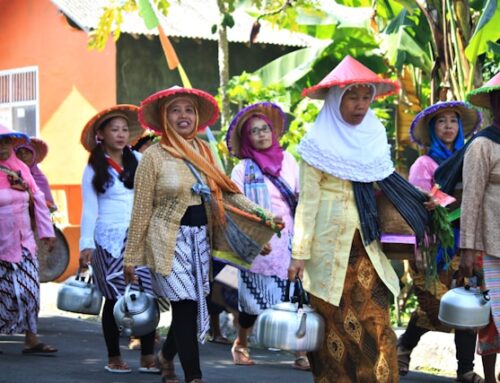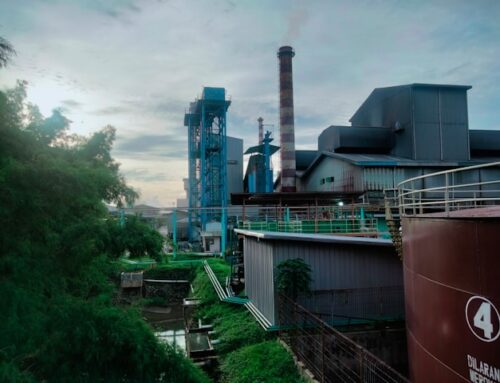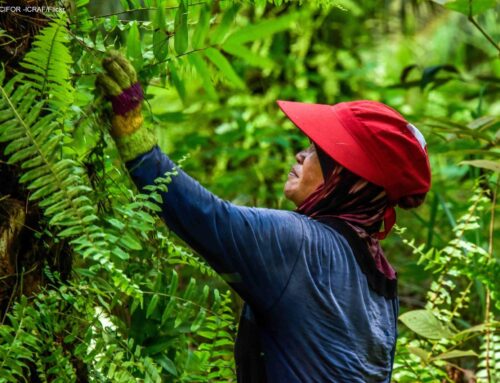This seminar will feature recipients of 2023 IRSA-BKF Paper Awards on structural transformation for growth acceleration. These papers were chosen out of hundreds of paper presented during the 2023 Indonesia Regional Science Association (IRSA) Conference on 17 and 18 July 2023 in Bogor, West Java.
Program (paper abstracts are below):
09.00-09.05 Remarks by Devanto Pratomo (Indonesian Regional Science Association/IRSA and Universitas Brawijaya)
09.05 – 09.25 Paper 1. Pandemic-induced de-urbanisation in Indonesia
Arief Anshory Yusuf (Universitas Padjadjaran)
09.25 – 09.40 Q&A
09.40 – 10.00 Paper 2. The impact of a longer period of schooling on health and wealth outcomes: Indonesian case study
Muhammad Syaikh Rohman (Universitas Airlangga)
10.00 – 10.15 Q&A
10.15– 10.35 Paper 3. Economy-wide impacts of natural resource downstream policy: the case of nickel moratorium
Achmad Rifa’i (BAPPENAS and Learning-Up Institute), Doddy Purwoharyono (BAPPENAS), and Muhamad Fickri Ramadhan (BAPPENAS)
10.35 – 10.50 Q&A
10.50 Close
Abstracts
Paper 3. Pandemic-induced de-urbanisation in Indonesia (working paper)
The COVID-19 pandemic has affected Indonesia severely. It was initially an urban event, but the loss of urban jobs has induced a large urban to rural migration, which we call de-urbanisation. This phenomenon temporarily reversed the long-term process of rural to urban reallocation of labour. In early 2021 the approximate size of this de-urbanisation was known, but not its effects. This paper analyses the general equilibrium consequences of this overlooked feature of the pandemic. The analysis shows that taking de-urbanisation into account, the negative economic impact of the pandemic is largest among rural, not urban households, especially the poorest.
Paper 2. The impact of a longer period of schooling on health and wealth outcomes: Indonesian case study
Policy evaluation has been the focus of recent debate, especially among developing countries. This study exploits a change in the enrollment policy in 1978 in Indonesia that resulted into a longer schooling periods for some cohort, and examines the impact of this policy on health and wealth outcomes. In particular, this natural experiment offers a change in the month threshold for entrance to primary schooling, so that younger cohorts should enroll in July instead of January to enter primary school.
In response to the policy change, affected students were exposed to a longer academic schooling period in the first grade, by having to repeat the first semester of the 1st grade. This results into longer schooling duration compared to the previous and following cohorts. A fuzzy Regression Discontinuity Design (RD) methodology is applied to assess the impact of this policy. This study examine the impact of the longer school period on students’ health outcomes 15 years later, when they enter adulthood. Specifically, this paper will examine the impact of the reform on students’ propensity to smoke, have a good quality of sleep, their income and their probability to work in the formal sector.
This study finds that the policy change has reduced the likelihood of students taking up smoking. However, this policy has also decreased the probability of students having good quality sleep. This study contributes to existing studies in the literature, by finding different results and providing more accurate explanation on previous study which evaluated the impact of the same policy (Parinduri, 2013; Samarakoon and Parinduri, 2015; Parinduri, 2017). Thus, this study has the potential to make significant contributions in terms of policy evaluation.
Paper 3. Economy-wide impacts of natural resource downstream policy: the case of nickel moratorium
Achmad Rifa’i (BAPPENAS and Learning-Up Institute), Doddy Purwoharyono (BAPPENAS) and Muhamad Fickri Ramadhan (BAPPENAS)
This study aims to examine economy-wide impact of nickel ore moratorium in Indonesia. The moratorium is followed by development of nickel manufacturing industries to improve its value-added. So far, most nickel derivative products in Indonesia have been absorbed by ironsteel sectors. Considering these existing conditions, we develop a simulation scenario for increasing ironsteel sector exports as a result of nickel downstream policy. The simulation scenario is performed using Computable General Equilibrium (CGE) IndoTERM model. The database in the model is mostly supplied from the latest Interregional Input-Output (IRIO) 2016.
Several attractive findings reveal that nickel downstream policy increase GDP at the national level though it is not very significant, only by 0.003%. In addition, export is also triggered higher, reaching 0.148%, and complied by investment, wages, and employment which also increase. At the regional level, Sulawesi is the region that receives the most benefits from nickel downstream policy, especially from the export performance which enhances by 0.596%. Meanwhile, GDP in Sulawesi increases slightly to 0.035%, followed by improvement in other indicators such as investment, wages, and employment.
In a sectoral context, performance of ironsteel sector is the most significant, experiencing an increase in all regions and Sulawesi being the highest, reaching 1.757%. Increments also occur in construction and utilities sectors, particularly in Sulawesi. This increase is certainly in line with efforts to enhance construction of smelters and also the increase in the need for electricity, water, and industrial vehicles to support operational activities of nickel manufacturing industries. Large nickel reserves potential and presence of smelters in Sulawesi are among the factors driving Sulawesi to become the region benefiting the highest development from nickel downstream policy.
Paper 3. Pandemic-induced de-urbanisation in Indonesia
Paper 3. Pandemic-induced de-urbanisation in Indonesia (working paper)
The COVID-19 pandemic has affected Indonesia severely. It was initially an urban event, but the loss of urban jobs has induced a large urban to rural migration, which we call de-urbanisation. This phenomenon temporarily reversed the long-term process of rural to urban reallocation of labour. In early 2021 the approximate size of this de-urbanisation was known, but not its effects. This paper analyses the general equilibrium consequences of this overlooked feature of the pandemic. The analysis shows that taking de-urbanisation into account, the negative economic impact of the pandemic is largest among rural, not urban households, especially the poorest.
Photo by Rahadiansyah on Unsplash
Slides and video for past seminars:




